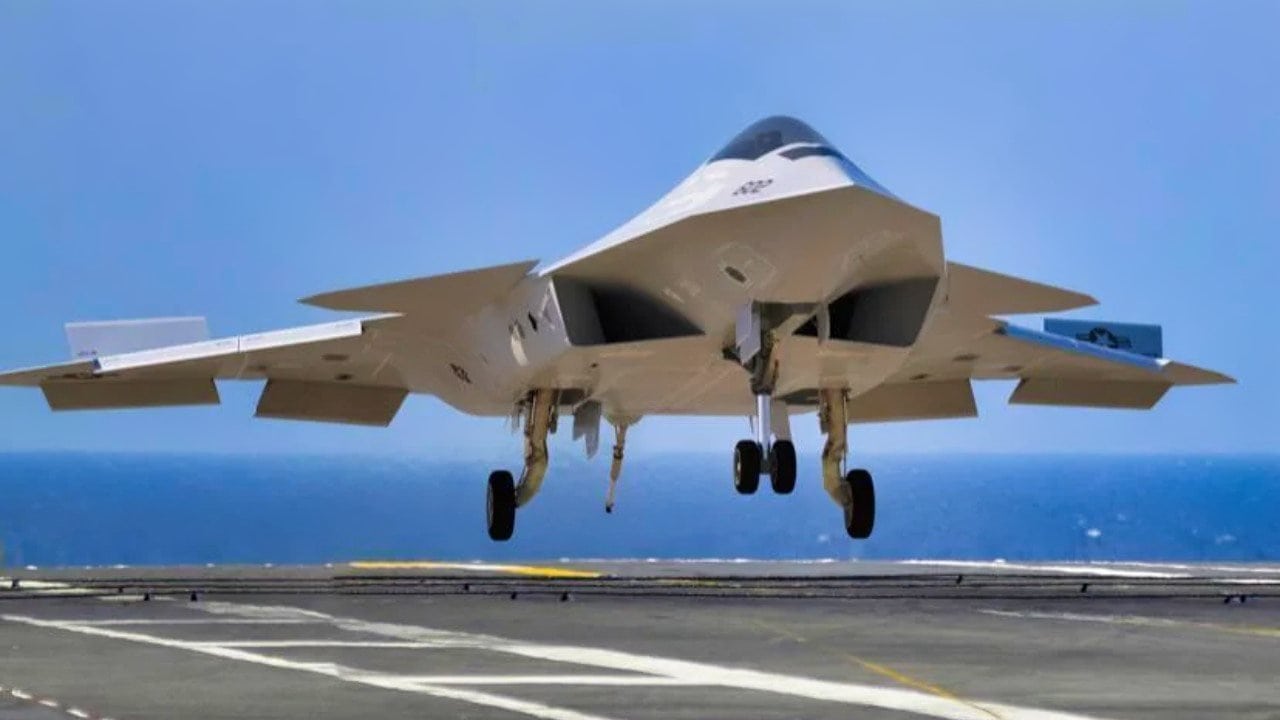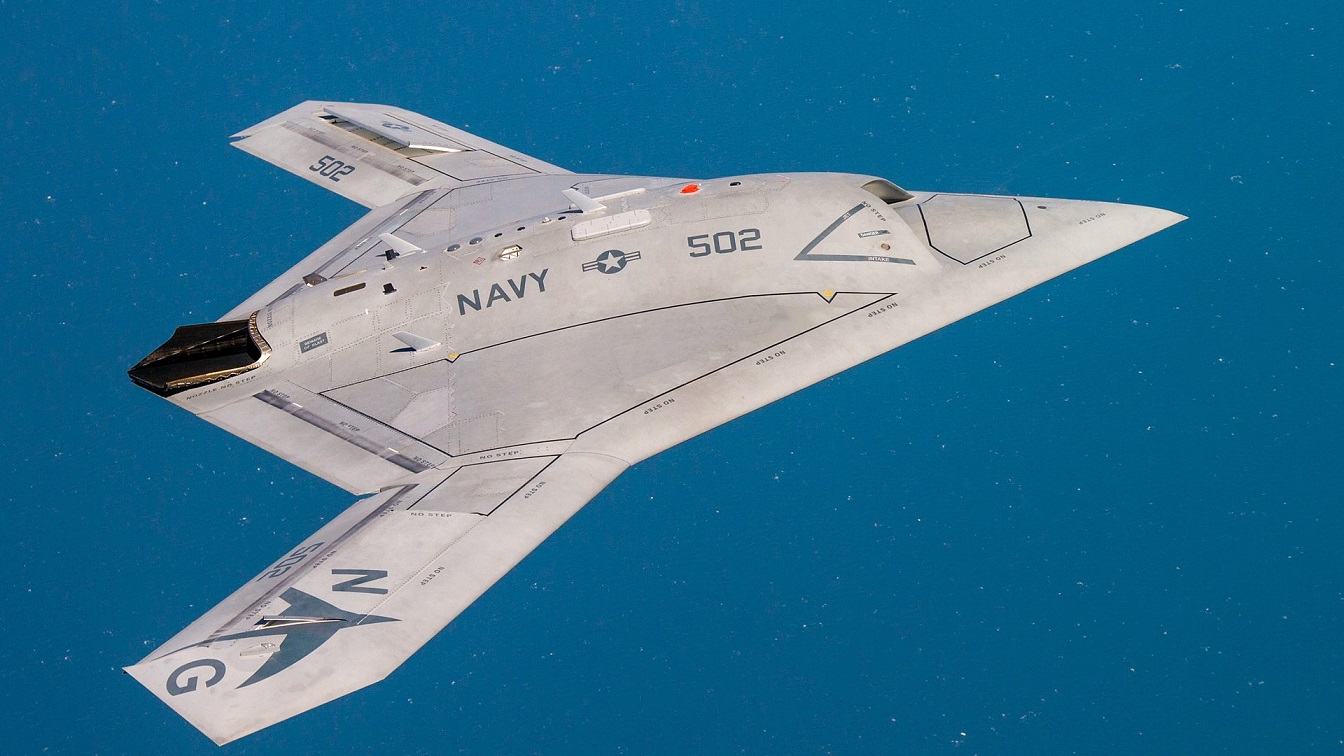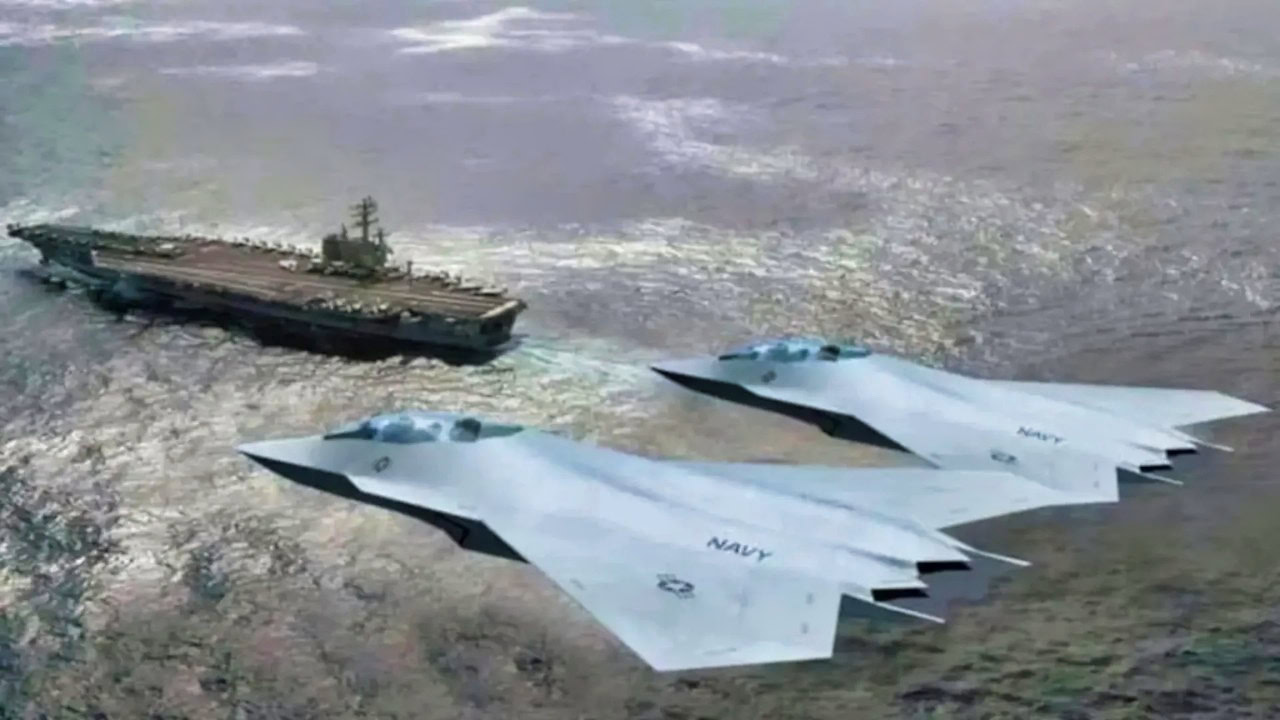Key Points and Summary: The US Navy’s F/A-XX fighter program aims to develop a next-generation aircraft to replace the F/A-18E/F Super Hornet and EA-18G Growler by the 2030s.
-As a key part of the Navy’s Next Generation Air Dominance (NGAD) initiative, the F/A-XX will focus on air superiority and long-range strike.
-The fighter will feature advanced stealth, enhanced sensors, and potentially directed energy weapons. It may be optionally manned, and designs suggest a tailless, twin-engine configuration.
-While the Navy and Air Force initially aimed for a joint propulsion system, they are now pursuing separate paths.
-The F/A-XX’s development is linked to the secretive “Link Plumeria” program.
F/A-XX Fighter, Explained
The F/A-XX fighter is the United States Navy’s next-generation aircraft, intended to replace both the F/A-18E/F Super Hornet as well as the EA-18G Growler sometime in the next decade and fly in tandem with the U.S. Navy’s fleet of F-35 fighters, and envisioned as the key component of the U.S. Navy’s Next Generation Air Dominance (NGAD) initiative.
The F/A-XX fighter’s role centers on maintaining air superiority, long-range strike missions, and networking with a broader ecosystem of manned and unmanned platforms. Its capabilities are expected to include advanced stealth features, enhanced survivability, and cutting-edge sensors to dominate in highly contested areas.
Interestingly, plans for the F/A-XX call for the fighter to be optionally manned, and while not necessarily attributable, could indicate that the U.S. Navy is intent on eventually moving to unmanned platforms — depending on the mission profile.
Artwork released by Boeing indicates that the fighter would be tailless, with a unique wing structure. Other artwork has also stated the jet would feature canards, though what the F/A-XX ultimately looks like remains to be seen.
Like the F/A-18E/F Super Hornets, the F/A-XX’s two prefixes indicate the plane’s anticipated role as a fighter and attack aircraft. In contrast, the double Xs are placeholders until the program reaches later stages of operational testing.
NGAD & NGAP
Originally, the U.S. Air Force and U.S. Navy wanted to develop similar (if not identical) Next-Generation Adaptive Propulsion (NGAP) systems to propel their upcoming fighter programs. But more recently, the services have indicated that their propulsion plans not longer overlap.
“We’re looking at more of a derivative-type engine solution,” said Rear Admiral Donnelly to The Aviationist.
“That’s just one example where we probably are different in many ways from the Air Force. In totality, they are two unique programs from an acquisition point of view and also going forward, so we’re relatively independent of each other at this point.”
The Range Question and Stealth…and Speed
Given the vast distances of ocean theaters — and the Pacific Ocean in particular — the range is a key point of emphasis for the F/A-XX platform, as are the munitions it would be equipped with.
Some upcoming hypersonic munitions are particularly noteworthy, as their deployment could coincide with fighters like the F/A-XX and offer increased stand-off range, keeping the fighters out of harm’s way.
Interestingly, the F/A-XX won’t rely just on better stealth, speed, maneuverability to survive — though those aspects of the fighter will certainly be superior to current-generation aircraft — but instead may rely on significantly more advanced weaponry to suppress enemy air defenses or other fighters.

F/A-XX. Image Credit: Creative Commons.
Directed energy, or laser weapons, may be one part of the solution for the F/A-XX’s survivability in contested environments.
But weaponry aside, the F/A-XX will still be a capable fighter.
Boeing has experience with the kind of aircraft the F/A-XX is anticipated to be. The Boeing X-47B, an unmanned, tailless combat aerial vehicle, a blended wing body aircraft, has been extensively tested on U.S. Navy aircraft carriers. It is a piece of technology and experience the company could leverage in their effort with the F/A-XX.
Link Plumeria
The development of the upcoming F/A-XX is closely tied to a special access program, or SAP, code-named Link Plumeria. Although specific details remain undisclosed, the program probably shields advancements in stealthy materials and propulsion systems, among other advanced technologies.

A unmanned X-47B operating over the Atlantic Test Range.
About the Author: Caleb Larson
Caleb Larson is an American multiformat journalist based in Berlin, Germany. His work covers the intersection of conflict and society, focusing on American foreign policy and European security. He has reported from Germany, Russia, and the United States. Most recently, he covered the war in Ukraine, reporting extensively on the war’s shifting battle lines from Donbas and writing on the war’s civilian and humanitarian toll. Previously, he worked as a Defense Reporter for POLITICO Europe. You can follow his latest work on X.

